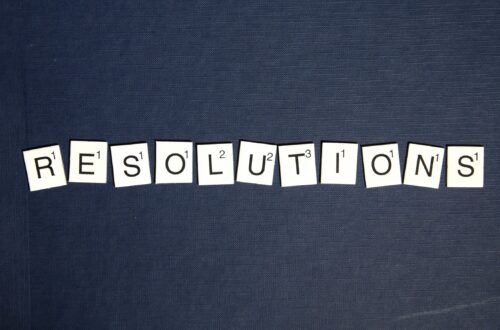
ADAS All Over…But Where Are the Calibrations?
Published in New England Automotive Report – Thomas Greco Publishing
Between rear cameras, blind spot monitors, emergency braking, adaptive cruise control and many other systems, ADAS is everywhere, often lurking beneath the surface of today’s vehicles from bumper to bumper. But like so many things, it’s easy to fall into the pattern of “out of sight, out of mind,” yet ignoring the need to calibrate these important safety features can have catastrophic consequences for your customers…and your business.
 For at least the past several decades, collision industry leaders have preached the necessity of pre- and post-repair scans, and their efforts have finally paid off. According to the 2022 “Who Pays for What?” survey on scanning and calibrations, which took place this past fall, 91 percent of shops pre-scan “all” or “most vehicles;” that number increases to 94 percent for post-repair scans, showing vast improvements compared to previous years.
For at least the past several decades, collision industry leaders have preached the necessity of pre- and post-repair scans, and their efforts have finally paid off. According to the 2022 “Who Pays for What?” survey on scanning and calibrations, which took place this past fall, 91 percent of shops pre-scan “all” or “most vehicles;” that number increases to 94 percent for post-repair scans, showing vast improvements compared to previous years.
But scans are just the beginning! Calibrations are a whole different animal.
“Scans are a health check; they generate a code if there’s a malfunction, but just because a sensor operates properly doesn’t mean it’s pointing in the right direction,” observed Robert Grieve, host of YouTube’s “Airing of GRIEVEances,” Society of Collision Repair Specialists Treasurer and owner of Nylund’s Collision Center (Denver, CO). “Each system must be separately accessed and then calibrations are performed to ensure values are correct and the system is functioning as intended.”
The majority of modern vehicles contain some sort of ADAS – the Insurance Institute of Highway Safety (IIHS) indicated that 60 percent of registered vehicles on US roadways in 2021 were equipped with at least one ADAS feature, which seems to be a modest estimate destined to increase with new models being released with more safety features each year. In fact, Globe Newswire reported, “North America had passenger vehicle sales of nearly 16 million units in 2021, with 90 percent of them equipped with at least one form of ADAS.”
Therefore, it stands to reason that the majority of repair orders should contain a line item for calibrations; however, CCC Intelligent Solutions’ 2022 Crash Course Midyear Report indicated fewer than 17 percent of estimates on current year or newer vehicles included an appraisal line for “calibration/reprogram/flash,” while only 7.1 percent of all appraisals included the same line item.
“Almost all present year or newer vehicles are typically equipped with some ADAS technology,” indicated Frank Terlep (OPUS IVS). “Several organizations have data that show a large percentage of ADAS equipped vehicles that need to be calibrated are not getting calibrated. Other data shows that more than 70 percent of consumers experienced an ADAS-related issue after a windshield replacement and/or a calibration! Sixty to 65 percent of vehicles that should receive a calibration didn’t, so when we ask where the industry sits on this, the numbers speak for themselves…We’re behind!”
Many repairers may be intimidated by the complexity of ADAS calibrations, but no matter how frightening this new technology may be, one thing is certain: It cannot be ignored! Failure to properly calibrate safety systems can lead to unsafe repairs which could result in subsequent accidents and even fatalities. This is definitely one of those situations where what you DON’T know can severely damage your business and its reputation.
“ADAS systems make the ‘best co-drivers’ due to their ability to process information at a higher rate,” Chuck Olsen (AirPro Diagnostics) noted. “They save lives…but once they are repaired, they have to be repaired the right way in order to do their jobs properly.”
Often, this doesn’t happen due to a “lack of knowledge” and the failure to “properly identify ADAS technologies on vehicles early in the process,” Terlep suggested. Unfortunately, the majority of shops seem to have their heads stuck in the sand, ignoring the tidal waves of technology bearing down on them, but that type of willful ignorance will not protect them if something goes wrong, even if you’re subletting your calibrations.
“When you sublet out your scans or your calibrations, you’re still liable,” Mike Anderson (Collision Advice) stressed. “The contract is between you and the vehicle owner. If you choose to sublet that out, the liability still falls on you.”
“Shops have always been liable for the repairs they perform on a vehicle, so the concept of liability does not change,” Terlep agreed. “Because ADAS technologies typically control a vehicle’s acceleration, steering and braking and there may be no visual indication the ADAS systems/components are inoperative, repairers have to implement new and different repair, quality and validation processes to ensure these systems operate as they should prior to returning a repaired/calibrated vehicle back to its owner.
“At the end of the day, a shop is 100 percent responsible for repairs and/or calibrations and should require the same quality and validation processes and documentation from a sublet calibration provider as if they were performing the services themselves.”
Yet, the cost of getting started in the calibrations business can definitely be prohibitive, providing an explanation of why only 30 percent of collision shops are capable of ADAS component replacement due to complexity, expense or perceived lack of demand. Space, equipment and training require a large investment, which experts estimate to be between $150,000-$250,000.
“More than 80 percent of collision and repair shops don’t have the space to perform calibrations properly,” Terlep lamented. “This means the industry is going to have to create new business models and workflows to properly identify, diagnose, calibrate and validate ADAS equipped vehicles.
“Merely buying a set of calibration targets and a diagnostic tool DOES NOT mean a business is prepared to perform ADAS services and calibrations,” he warned, advising shops to “invest in the three Ts (Tools, Technology and Training) associated with ADAS systems, diagnostics, calibrations and validations. They also need to utilize OE repair procedures on EVERY vehicle! Every shop should have detailed documentation for all aspects of the calibration/validation processes.”
“Getting into the calibration business is definitely challenging,” admitted Greg Peeters (Car ADAS Solutions). “There’s a ton of rules to get the floor, walls and lighting just right. Each manufacturer has their own idiosyncrasy that essentially requires perfection to ensure the accuracy and success rate of your calibrations.”
Peeters identified 12 components to a successful calibration center: market evaluation, pro forma business plan, real estate location assistance, calibration center certification, technician recruitment and screening, technician certification, marketing, proprietary management software, equipment and tools, on-site support, technical support and development and continuous quality control.
“You have to get the right people doing the job,” he stressed the most important puzzle piece.
The right person with the knowledge base needed for this difficult work is the most important – and possibly hardest – asset to come by.
“A calibration technician cannot rely on memorization; they need to constantly be researching and keeping on top of this evolution because things change continuously,” Olsen pointed out. “From a workflow perspective, this work requires a different skill set.”
“A lot of the procedures that need to be done in order to do a proper diagnostic scan aren’t just about hooking up a scan tool,” Anderson agreed. “It really upsets me when people dumb it down and say, ‘I just have my wash rack person do it.’ That’s not right.”
Acknowledging that calibrations are “not easy; it’s a moving target,” Grieve pointed out, “You can have three vehicles of the same year, make and model…yet they’re all equipped differently. That’s why we need one person who is responsible for this part of the process. It’s the new position that shops don’t realize they need. We need to start taking calibrations seriously and assign a specific person to this task. The problem is, you can’t hire this person…you have to grow this person into this new position.”
Grieve has a unique perspective on what’s happening in the industry since his shop frequently performs post-repair inspections. “You cannot even imagine some of the horrific things we see. We always start with a pre-repair scan, and often, we immediately know that the original shop didn’t perform a post-scan because the codes are still there! I get that it’s frustrating because there’s no single place to get all the answers. It’s overwhelming because it’s a moving target, plus there’s all kinds of misinformation out there.”
All this advice may be overwhelming, but ADAS calibrations are not all doom and gloom…There’s definitely a lot of benefits available to shops that adapt to the future and do their due diligence in ensuring that vehicles are restored to their pre-loss condition.
“This is the biggest business opportunity our industry has seen in over 20 years,” Terlep insisted, alluding to his company’s free guide on opening and operating an ADAS business (available at autotechcelerators.com). He predicted, “The organizations that choose to embrace this opportunity early will be very successful.”
When asked about the positive aspects of performing calibrations, Grieve countered with a question of his own: “How about all the money that you’re NOT getting for fixing the car properly? This industry is very slow to adapt…just look at how long it’s taken us to get to our current acceptance of pre- and post-repair scanning, and we still haven’t fully embraced it.”
Embracing calibrations is even more important since drivers rely heavily on these systems. Imagine a scenario where an automatic brake sensor isn’t properly calibrated and doesn’t stop the car from [backing into an obstacle such as a wall]. Bad enough. But what if the car barrels or backs into a child passing behind the car instead? Catastrophic.
Payment absolutely factors into many shops’ reluctance to embrace the reality of calibrations’ importance today and in the future.
“Insurance companies play a role in this because they routinely deny procedures to get the car fixed properly, but why wouldn’t you make sure the car is as safe as possible to avoid future accidents?” Grieve acknowledged. “They say it’s not reasonable and customary because OTHER shops aren’t doing it, but that doesn’t mean it shouldn’t be done. What would their argument be if everyone WAS performing these necessary calibrations like the OEM requires?”
“People use insurance companies as an excuse. They say, ‘Well, the insurance company won’t pay for it.’ That’s just wrong on multiple levels,” Anderson dismissed these complaints. In fact, the earlier referenced “Who Pays for What?” survey found that 72 percent of shops that negotiate for seat calibration, and 90 percent that negotiate for calibration of other systems, receive payment “always” or “most of the time” by the eight largest national insurers.
And CCC’s 2022 Crash Course Midyear Report showed an average calibration entry of $238…with a maximum fee on a single appraisal of $3,748 for all the required or recommended calibrations on the vehicle!
The secret to getting paid?
“Documentation…Documentation…Documentation…Repairers need to document every repair as if they were going to court the next day,” Terlep emphasized. “OEM repair procedures are critical. Every calibration file should include what ADAS systems and components are on the vehicle, what triggers a calibration on those components and what calibration and validation processes are required by each vehicle manufacturer!”
And when the insurer still won’t pay, it all boils down to education – for both the shop and the customer.
“Honestly, I think some of it is due to a lack of education; I’ll give some shops the benefit of the doubt,” Anderson offered. “Also, some people aren’t doing it based on the nature of the vehicle or the type of accident it was in. They’ll think, ‘That’s an older vehicle; it doesn’t have the technology that requires me to do it.’ They may say, ‘The accident wasn’t that bad; I don’t need to do that.’ I can’t believe the industry is still having this discussion. Get over it; it needs to be done. Nobody would question whether they needed a cat scan or an MRI. Imagine you went to the hospital because your leg was hurting you because you fell down. You wouldn’t be asked, ‘Well, did you fall down mildly? Was it a moderate fall? Was it severe?’ You wouldn’t be told, ‘Well, if it was a moderate or severe fall, we’ll pay that for your leg. Did you only fall one step? If so, we won’t X-ray your leg.’ That’s just ludicrous.”
“Unless you’re on a referral program, your contract is with your guest, not the insurance company,” Grieve stressed. “If the insurance company won’t pay for the needed repairs, the guest has to pay for it. We’re not ignoring these highly complex systems by fixing cars any other way. When you’re knowledgeable about why these things are needed and you have the proper documentation, it’s not difficult to educate customers. You don’t want them to get hurt, and they don’t want to jeopardize the safety of themselves and their families either.
“Our job is to keep our guests and future owners of that vehicle safe; there’s no simpler way to put it,” he added. “Whether you’re ignoring calibrations because you don’t understand the consequences or due to a lack of technical knowledge, it doesn’t matter. We’re the professionals, and we have to be professional by doing the right thing.”
Is your shop doing the right thing? All too often, this industry waits to change until something horrible happens. Instead of learning from someone else’s mistakes, maybe it’s time to learn from the knowledge that industry leaders have shared over and over again. It’s time to embrace calibrations, and we want to know where your shop stands. Your information will be kept confidential, but weigh in on this important topic by taking our survey at
bit.ly/TGPADASpoll.




